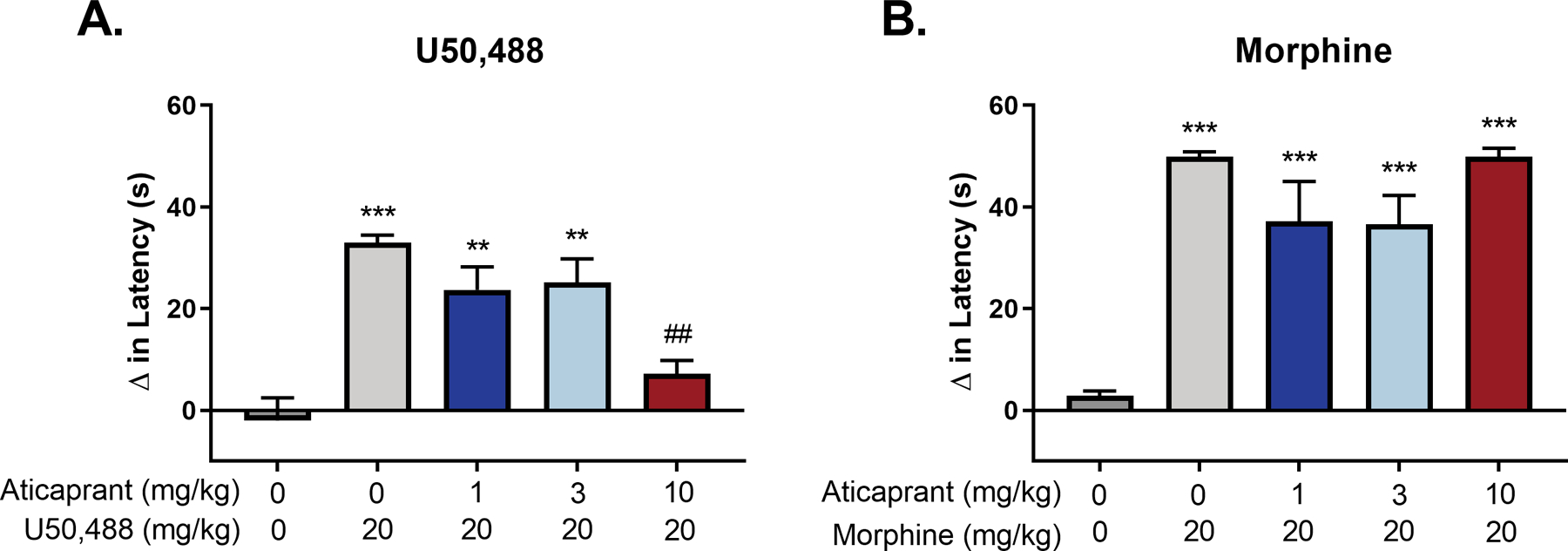Figure 1.

Effects of aticaprant (1, 3, or 10 mg/kg) on (A) U50,488 (20 mg/kg) and (B) morphine (20 mg/kg) induced antinociception on the hot plate assay. Aticaprant was injected at 24 hours, U50,488 at 15 min and morphine at 30 prior to testing. U50,488-induced antinociception (n=8 per group) was blocked only in mice pretreated with 10 mg/kg aticaprant. Morphine-induced antinociception was not blocked by any dose of aticaprant (vehicle, n=15; morphine, n=14; 1 mg/kg aticaprant, n=9; 3 mg/kg aticaprant, n=9; 10 mg/kg aticaprant, n=8). The * symbol denotes significant differences between the vehicle (0 mg/kg aticaprant/0 mg/kg U50,488 or 0 mg/kg morphine) group and all other groups (**p < 0.01; ***p < 0.0001). The # symbol denotes a significant difference between aticaprant-treated subjects and U50,488 only treated subjects (##p < 0.01).
